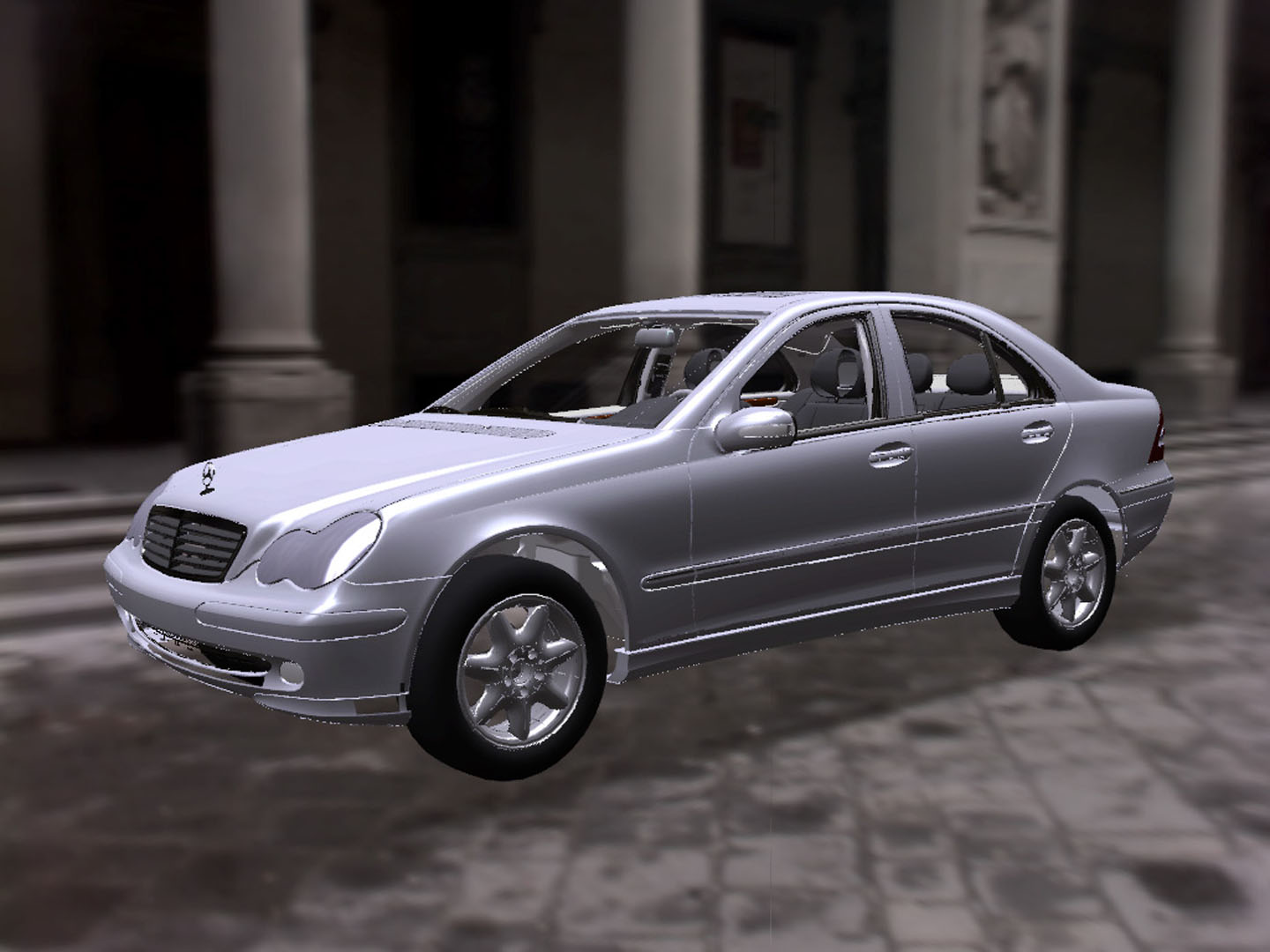“GPU-based trimming and tessellation of NURBS and T-Spline surfaces” by Guthe, Balázs and Klein
Conference:
Type(s):
Title:
- GPU-based trimming and tessellation of NURBS and T-Spline surfaces
Presenter(s)/Author(s):
Abstract:
As there is no hardware support neither for rendering trimmed NURBS — the standard surface representation in CAD — nor for T-Spline surfaces the usability of existing rendering APIs like OpenGL, where a run-time tessellation is performed on the CPU, is limited to simple scenes. Due to the irregular mesh data structures required for trimming no algorithms exists that exploit the GPU for tessellation. Therefore, recent approaches perform a pretessellation and use level-of-detail techniques. In contrast to a simple API these methods require tedious preparation of the models before rendering and hinder interactive editing. Furthermore, due to the tremendous amount of triangle data smooth zoom-ins from long shot to close-up are not possible, In this paper we show how the trimming region can be defined by a trim-texture that is dynamically adapted to the required resolution and allows for an efficient trimming of surfaces on the GPU. Combining this new method with GPU-based tessellation of cubic rational surfaces allows a new rendering algorithm for arbitrary trimmed NURBS and T-Spline surfaces with prescribed error in screen space on the GPU. The performance exceeds current CPU-based techniques by a factor of up to 1000 and makes real-time visualization of real-world trimmed NURBS and T-Spline models possible on consumer-level graphics cards.
References:
1. Abi-Ezzi, S. S., and Subramanian, S. 1994. Fast dynamic tessellation of trimmed nurbs surfaces. Computer Graphics Forum 13, 3, 107–126.Google ScholarCross Ref
2. Balázs, Á., Guthe, M., and Klein, R. 2004. Fat borders: Gap filling for efficient view-dependent lod rendering. Computers & Graphics 28, 1, 79–86.Google ScholarCross Ref
3. Bolz, J., and Schröder, P., 2003. Evaluation of subdivision surfaces on programmable graphics hardware. submitted.Google Scholar
4. Bóo, M., Amor, M., Doggett, M., Hirche, J., and Strasser, W. 2001. Hardware support for adaptive subdivision surface rendering. In Proceedings of the ACM SIGGRAPH/EUROGRAPHICS workshop on Graphics hardware, 33–40. Google ScholarDigital Library
5. Chhugani, J., and Kumar, S. 2001. View-dependent adaptive tessellation of spline surfaces. In Proceedings of the 2001 symposium on Interactive 3D graphics, ACM Press, 59–62. Google ScholarDigital Library
6. Cohen, E., Lyche, T., and Riesenfeld, R. F. 1980. Discrete b-spline and sub-division techniques in computer aided geometric design and computer graphics. Computer Graphics and Image Processing 14, 2, 87–111.Google ScholarCross Ref
7. Debevec, P. 1998. Rendering synthetic objects into real scenes: bridging traditional and image-based graphics with global illumination and high dynamic range photography. In Proceedings of ACM SIGGRAPH 98, ACM Press, 189–198. Computer Graphics Proceedings, Annual Conference Series. Google ScholarDigital Library
8. Eck, M. 1993. Degree reduction of bézier curves. Computer Aided Geometric Design 10, 3–4, 237–252. Google ScholarDigital Library
9. Filip, D., Magedson, R., and Markot, R. 1986. Surface algorithms using bounds on derivatives. Computer Aided Geometric Design 3, 4, 295–311. Google ScholarDigital Library
10. Forrest, A. 1972. Interactive interpolation and approximation by bézier polynomials. The Computer Journal 15, 1, 71–79.Google ScholarCross Ref
11. Forsey, D. R., and Klassen, R. V. 1990. An adaptive subdivision algorithm for crack prevention in the display of parametric surfaces. In Graphics Interface ’90, Canadian Information Processing Society, 1–8. Google ScholarDigital Library
12. Guthe, M., Meseth, J., and Klein, R. 2002. Fast and memory efficient view-dependent trimmed nurbs rendering. In proceedings of Pacific Graphics 2002, IEEE Computer Society, 204–213. Google ScholarDigital Library
13. Heckbert, P. 1982. Color image quantization for frame buffer display. Computer Graphics (Proceedings of ACM SIGGRAPH 82) 16, 3 (July), 297–307. Google ScholarDigital Library
14. Herzen, B. V., and Barr, A. H. 1987. Accurate triangulations of deformed, intersecting surfaces. Computer Graphics (Proceedings of ACM SIGGRAPH 89) 21, 4 (July), 103–110. Google ScholarDigital Library
15. Kanai, T., and Yasui, Y. 2004. Per-pixel evaluation of parametric surfaces on gpu. In ACM Workshop on General Purpose Computing Using Graphics Processors (also at SIGGRAPH 2004 poster session).Google Scholar
16. Kumar, S., Manocha, D., Zhang, H., and Hoff, K. E. 1997. Accelerated walk-through of large spline models. In 1997 Symposium on Interactive 3D Graphics, ACM SIGGRAPH, 91–102. ISBN 0-89791-884-3. Google ScholarDigital Library
17. Nishita, T., Sederberg, T. W., and Kakimoto, M. 1990. Ray tracing trimmed rational surface patches. Computer Graphics (Proceedings of ACM SIGGRAPH 90) 24, 4 (August), 337–345. ISBN 0–201-50933-4. Google ScholarDigital Library
18. Park, Y., and Choi, U. J. 1995. Degree reduction of bézier curves and its error analysis. J. Austral. Math. Soc. Ser. B 36, 399–413.Google ScholarCross Ref
19. Rockwood, A. P., Heaton, K., and Davis, T. 1989. Real-time rendering of trimmed surfaces. Computer Graphics (Proceedings of ACM SIGGRAPH 89) 23, 3 (July), 107–116. Google ScholarDigital Library
20. Sederberg, T. W., Cardon, D. L., Finnigan, G. T., North, N. S., Zheng, J., and Lyche, T. 2004. T-spline simplification and local refinement. ACM Transactions on Graphics 23, 3, 276–283. Google ScholarDigital Library
21. Shantz, M., and Chang, S.-L. 1988. Rendering trimmed NURBS with adaptive forward differencing. Computer Graphics (Proceedings of ACM SIGGRAPH 88) 22, 4 (August), 189–198. Google ScholarDigital Library
22. Wimmer, M., Scherzer, D., and Purgathofer, W. 2004. Light space perspective shadow maps. In Rendering Techniques 2004 (Proceedings of Eurographics Symposium on Rendering), A. Keller and H. W. Jensen, Eds. Eurographics Association, June, 143–152. Google ScholarDigital Library
23. Zheng, J., and Wang, G. 2003. Perturbing bézier coefficients for best constrained degree reduction in the l2-norm. Graphical Models 65, 351–368. Google ScholarDigital Library





